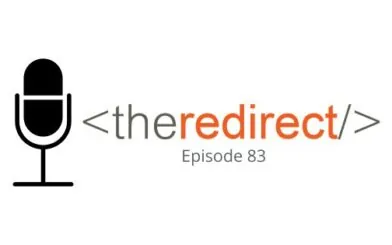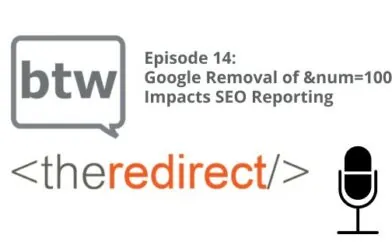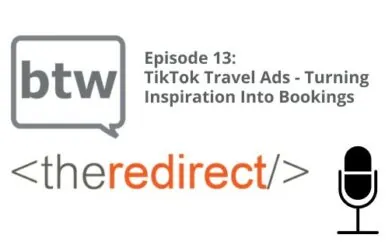Episode 23 / November 9, 2017
Listen now:
In this episode, the BlackTruck team discusses the following topics:
- Optimizing images for search (begins at 1:00)
- The dark side of featured snippets? (begins at 8:38)
- Strategies for last-minute holiday campaigns (begins at 17:50)
Tips for Ranking Higher in Image Search
Load time is becoming more important as search engines continue to take the user experience into account when determining search rankings. Image size is a large factor of page load times. What that means: Gotta find that sweet spot between keeping your site awesome and keeping it practical, as far as load time vs. visuals go. Here are some takeaways from Search Engine Watch that will help your website’s images help your performance in search.
Large image files (as in byte size, not the display dimensions) are of no benefit to the user; all they do is slow down page load time. Compress your images whenever possible, with resources such as tinyjpg. Try to save and upload all your images in PNG format rather than JPEG or GIF, as PNGs are better for compression without losing quality.
Optimize the image file name. This is the file’s name, as stored on the server (such as thispicturefile.png), etc. This should be done in addition to using alt tags. (If you don’t know about alt tags, Google it!) Though we won’t see the tag on the page, it still ends up in a readable format. Note that many times there are opportunities to have alt text AND title text tied to the image. Both should be used when it makes sense. Consider these to function similar to a page title and H1.
If your image lives on a page that is highly optimized and has good authority, it will lead to greater chances of your IMAGE showing up in search results. A perfectly optimized image/image file on a lousy page can still rank lousily. This includes all elements surrounding the page and image in terms of quality and relevancy.
The use of stock images won’t hamper your efforts, but it will show generic efforts, which will lead to passed-over results in search and on-site. Create original content wherever possible.
Practice some link-building to your popular images if need be. Engagement can happen with images, as well. This is a little more difficult to grasp, thinking outside of social media, but relates more to embedded content, or maybe images from a page that would be more apt to being shared on other sites. Check out the Search Engine Watch article for more details.
Are Featured Snippets Trustworthy? Well… They Should Be.
We’ve talked a lot about the rise of voice search due to the growth of mobile and home smart devices, and where exactly those results come from that our digital assistants read back to us. That would be the featured snippets on search results.
Quick, informal definition of featured snippets: A featured snippet is a summary response to a search query that shows at the top of the search engine results page. Featured snippet content is pulled from some website, somewhere online, and is the source Google believes is answering that search query best at the time the search is performed. That source is not necessarily the #1-ranking page for that search query. [Read more: What is Position Zero in Google?]
Going after position zero has been a strategy for SEOs for some time now, so imagine my surprise when I stumbled upon this: HubSpot surveyed consumers in Australia, the UK, and the United States, and found that only 7% of respondents “consistently trust featured snippet results.” Huh.
The author, Amanda Zantal-Wiener, explores why it might be that so few people trust the contents of featured snippets. She gives some examples of “bad” featured snippets that don’t actually answer the query, or answer it in a misleading way. Some instances of this can be more negative than others – say if someone uses Dr. Google to diagnose a symptom and gets an answer that results in them delaying seeking treatment they may need.
So, that being the case, I can see why people might find it hard to trust featured snippets. At the end of the article, Zantal-Wiener says that for marketers, it “could be worthwhile” to optimize for featured snippets – “ethically, of course, and with accurate, truthful information.”
I want to continue that train of thought and say that as marketers, we should be optimizing for featured snippets – and yes, with truthful information! – because if we can establish more reliable featured snippets, then we’ll be not only helping out searchers, but helping out our clients, as well.
If the problem is unreliable featured snippets, let’s inject a little of our honest SEO to make a good name for this area of search that not only exists to serve up what is believed to be the best, most relevant answer for search queries, but also will likely be feeding our voice assistants going forward – the use of which is only growing.
Strategies for Last-Minute Holiday Campaigns
No doubt we see Christmas being pushed on consumers much earlier year after year. We see it in the stores once we’re past Halloween – we skip right over Thanksgiving and dive deep into Christmas. But not so much in the online world… Why is that? It’s not like major brands sit at idle and don’t think about their major holiday promotions.
If you are one of those brands that have sat at idle and now realize it’s time to revamp your holiday promotions from last year, we have some tips for supercharging those efforts. Read Jason’s accompanying blog post here: Strategies for Last-Minute Holiday Campaigns.
Thanks for tuning in! To catch future episodes of The Redirect Podcast, subscribe on SoundCloud, iTunes, or Stitcher.



